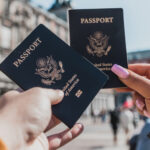In an age where digital navigation is at our fingertips, traveling with a paper map might seem outdated. However, embracing this classic approach can enrich your travel experience, offering a sense of adventure and a deeper connection to your surroundings. Here’s a guide on how to effectively navigate your journey using a paper map.
1. Choose the Right Map
The first step is selecting an appropriate map for your journey. Consider the following types:
- Road Maps: Ideal for car trips, they highlight major highways, secondary roads, and points of interest.
- Topographic Maps: Great for hiking and outdoor activities, showing elevation changes and natural features.
- City Maps: Useful for urban exploration, detailing streets, landmarks, and public transportation routes.
Ensure your map is up-to-date and covers the areas you plan to visit.
2. Learn Map Basics
Understanding map symbols and scale is crucial:
- Legend: Familiarize yourself with the map’s legend, which explains symbols for roads, trails, landmarks, and other features.
- Scale: The scale shows the relationship between map distances and real-world distances. A 1:50,000 scale means 1 unit on the map equals 50,000 units in reality.
3. Orient Yourself
Before you start your journey, orient your map to match the landscape:
- Compass Use: Align the map so that north on the map matches north on your compass. This helps you accurately relate map features to the real world.
- Landmarks: Identify prominent landmarks around you and locate them on the map to confirm your position.
4. Plot Your Course
Planning your route involves marking your starting point, destination, and key waypoints:
- Route Highlighting: Use a pencil or highlighter to trace your intended path. This visual guide makes it easier to follow your route.
- Distance Measurement: Use the map’s scale to estimate distances between points and gauge travel time.
5. Navigation Techniques
While on the move, employ these techniques to stay on track:
- Checkpoints: Regularly identify landmarks or features as checkpoints to ensure you’re following the correct route.
- Pacing: Measure distances using your steps (pacing) if you’re hiking. For instance, count the number of steps it takes to cover a known distance, then use that to estimate distances on the map.
6. Stay Flexible
Traveling with a paper map requires adaptability:
- Reassess: If you miss a turn or a landmark doesn’t appear as expected, stop, reassess your position, and adjust your route as needed.
- Ask for Directions: Don’t hesitate to ask locals for guidance, especially if you’re unsure about your location.
7. Embrace the Experience
Finally, enjoy the journey:
Disconnect: Without the distraction of digital devices, you can immerse yourself in the adventure and connect more deeply with your travel companions and surroundings.
Slow Down: Traveling with a paper map often means moving at a slower pace, allowing you to appreciate the scenery and discover hidden gems.



